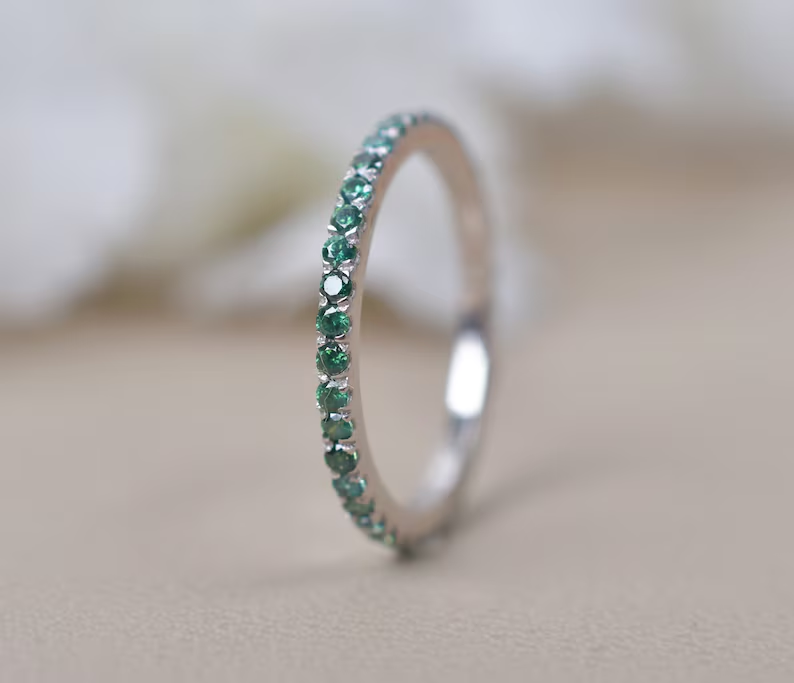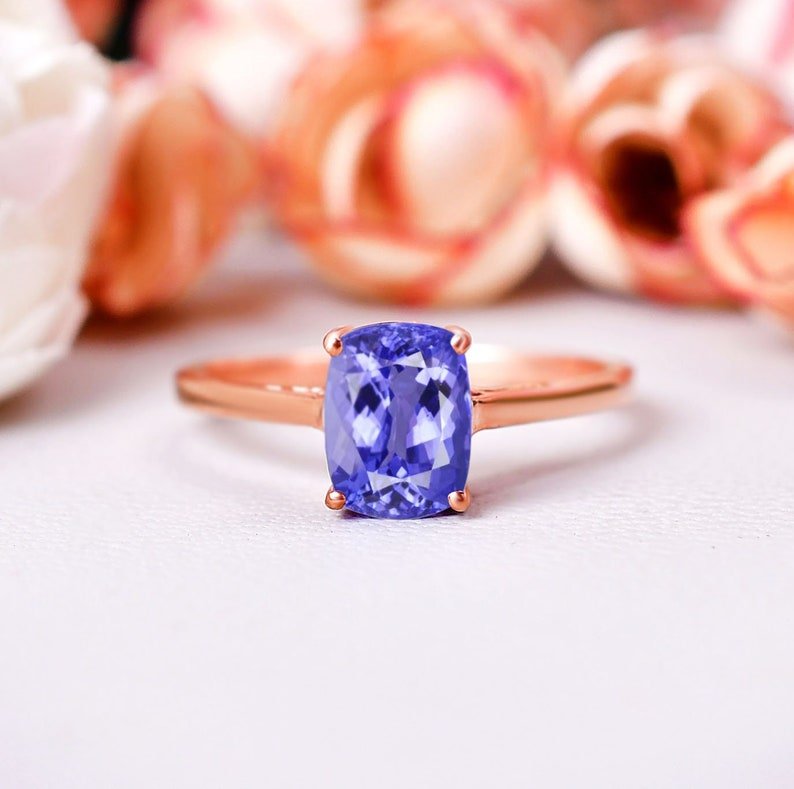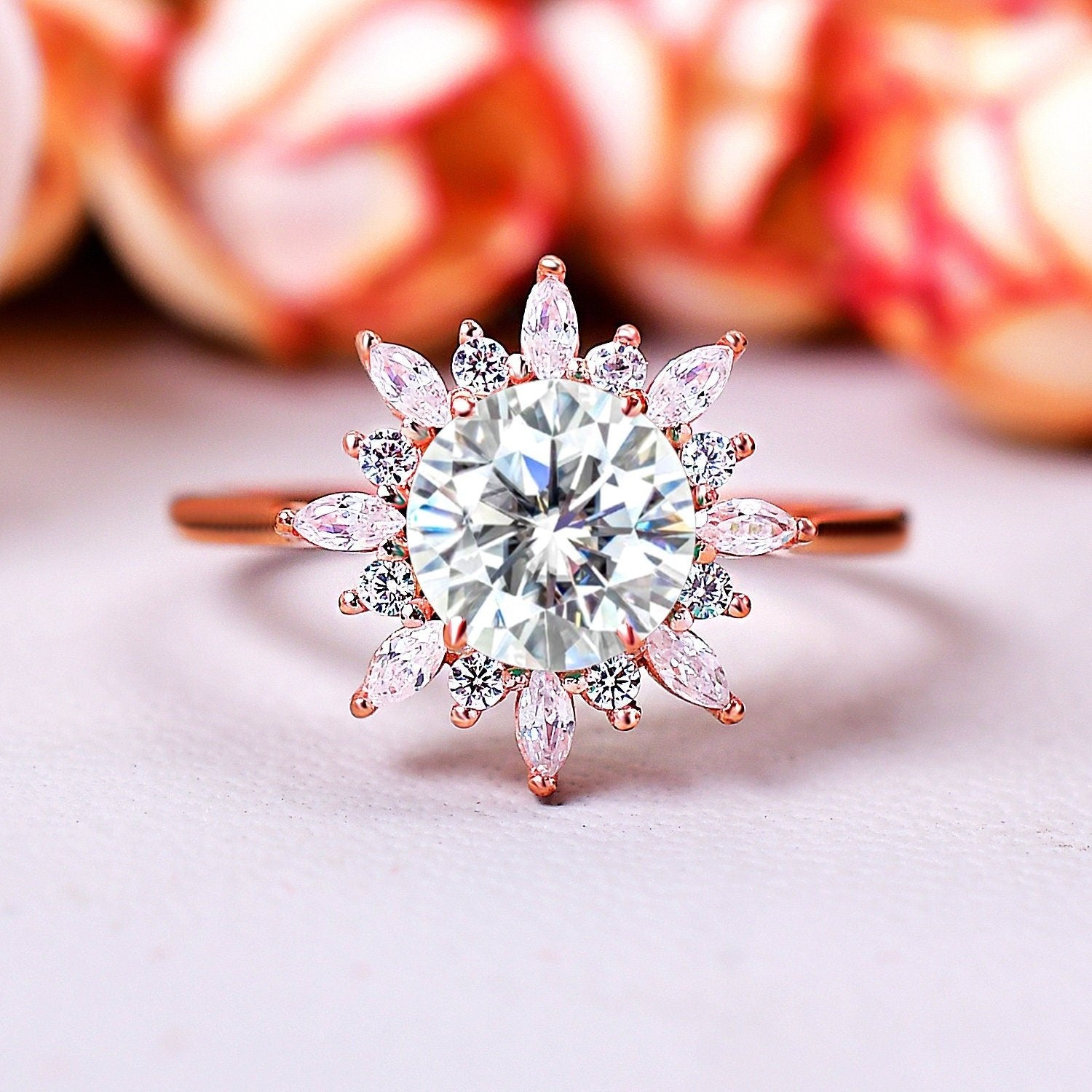How to Measure Ring Size at Home
Share

You get a text from your friend: "The ring I ordered doesn't fit! How was I supposed to know my ring size?"
You are not alone. Many people struggle to find the perfect ring size. After the rise of e-commerce websites, self-purchasing rings is at an all-time high. Finding the right size that offers style and comfort is essential.
If you don’t know “how to measure ring size at home,” you can accurately measure the ring size with everyday items. This will allow you to treat yourself to that gorgeous piece you've been eyeing or shop online during late-night browsing sessions.
Why Should You Go for the Right Ring Size?
There aren't many worse feelings than putting on that gorgeous ring. Making sure you get the sizing right matters because rings tend to be more expensive than other types of jewelry and/or because they tend to have a good emotional charge.
Safety and Comfort Concerns
If the ring is way too loose, it can slip off while doing normal activities (yes, many people lose their rings down the drain). If it is too tight, you have tightness that causes blood flow to be restricted to the finger and swelling of the finger. In this scenario, you require soap, ice, or, worst case, a trip to the emergency room.
Impact on Ring Appearance
Then there is the problem of appearance. Here is a little-known fact: the physical size of your finger alters the appearance of the ring. A fitting ring will sit flush against the finger to show off the design. If it’s too loose, it will twist, slide, or bunch up, changing how it looks completely.
The Reality of Ring Resizing
Also, there are issues with resizing. Some materials cannot be resized, like titanium or tungsten. And some of those rings with elaborate detail or stones around the band can be difficult or expensive to resize.
Jewelry Care Tip: How to Clean a Diamond Ring?
The Most Trusted At-Home Methods (Step-by-Step)
1. Paper or String Strip Method (Most Common & DIY)
This method is all about how to measure ring size at home without any fancy gadgets or commissions (for a more DIY method). The method was attributed to jewelry people because it is, of course, simple (one is simple and the other is almost same easy to do).
What you need: Strip of paper or string, pen, ruler (with metric assessment, preferably).
Steps:
- Take a strip of paper about 6 inches long and ¼ inch wide, or a piece of non-stretchy string.
- The paper or string strip will not be an issue, so wrap the paper or string strip around.
- The base of your intended finger should be snug but not too tight around the knuckle (should slide off easily).
- With your pen, mark exactly where the strip crosses over itself.
- Lay the strip flat and measure the distance from the start to the mark in millimeters.
- Then match that circumference measurement with a ring size conversion chart.
Pro tips that make a difference:
- Measure at the end of the day when your fingers are largest (your fingers swell and they swell more in warm weather).
- Measure 2-3 times for consistency.
- If the size of the knuckle is significantly bigger than the base of the finger, take measurements of each and go with the size that is rated between the knuckle and the base.
- Don't pull the paper too tightly; it should not bind the knuckle but rather slide over easily.
Must-Read: How to Clean a Silver Ring at Home
2. Measuring an Existing Ring
This option is an excellent choice if you have a ring that fits well on the same finger you are measuring.
Option 1: Place the ring over a printing or online ruler, line up the inside edge of the ring against the circles on the chart, and find your size or
Option 2: Measure the inner diameter on the inside of the ring (this is just measuring straight across the inside of the ring) and compare it to sizing charts.
The key here is that you use a ring that fits on the intended finger properly. Certainly not that cocktail ring you wear on your middle finger; it will certainly not help you determine your engagement ring size for your ring finger.
3. Utilizing the Ring Sizing Device
Would you prefer to measure your ring size with more precision? Simply order a reusable plastic or metal ring sizer through an e-commerce website. Many jewelry companies offer ring sizers for free or for less than $10.
Basically, you slide the sizer on your finger until you find the most comfortable fit. It should go over your knuckle with relative ease and not be too loose at the base of your finger. This gives you the closest experience to trying on the ring.
Explore: Engagement Ring Styles: Everything You Need to Know
Some Expert Tips to Ensure You Get Your Ring Size Accurately
From talks with jewelers and my testing and validation, we have some tips that would have a super great impact:
Timing is everything: Measure your fingers when they are the most swollen (typically at the end of the day). Your finger size may vary by half a size or more at different times of the day. Temperature is also more important than you realize.
Temperature matters more than you think: Cold hands = smaller fingers, and heat (weather, working out, or hot showers) causes swelling of the fingers. If possible, try to get the measurement at room temperature. Your dominant hand is slightly different. The fingers on your dominant hand will usually be a little bigger.
Between sizes? Go larger: If you go into the process with two sizes in mind, I would recommend rounding up for rings with wide bands (bands that are more than 5 mm) rather than rings with thin bands. Wide bands can tend to fit tighter than thinner bands.
Try multiple methods: Try at least two different methods and compare the outcome. If you use the paper method, it tells you you're a size, and you measure your existing ring, and it is a different size, it's worth it to take one last measurement and give it your best try.
Choose the right chart: Different countries use different ring size systems. Make sure you're using a comprehensive chart that includes US, UK, Indian, and European sizing if you're shopping internationally.
Also Read: Engagement Ring vs Wedding Ring: Know the Difference
Common Mistakes You Should Avoid
We have seen people repeatedly make these mistakes when learning how to measure ring size. Avoid them:
Not measuring multiple times: Your finger may change size throughout the course of a day, depending on the time of day it is, the temperature, and whether or not you care where you are on the hydration scale. It is best to measure multiple times, on multiple days, if possible.
Measuring with stretchy material: Rubber bands, elastic string, and stretchy fabric will not give you an accurate measurement. Stick to non-stretchy material, like paper, ribbon, or dental floss.
Considering knuckle size: If you have large knuckles relative to the base of your finger, you need to measure both. The ring needs to go over your knuckle but cannot be too loose at the base of your finger.
Not checking print scale: If you use a printable chart, you need to ensure that your printer is not resizing the image. Most printers have a default to "fit to page," which will reduce the size of the diagram and throw your measurements off.
Using the wrong conversion chart: Be sure that the chart comes from a seamstress who uses jewelry and also provides the correct sizing system that you need (for example, US sizes do not match UK sizes).
Must-Read: How to Wear Your Engagement Ring and Wedding Band
What to Do If You Remain Unsure
Even when counting on your total fingers, sometimes it is good to get a second opinion. Here are your alternatives:
Order a ring sizer: Many online jewelers will send you a free or cheap plastic sizer. It's worth the wait if you're making a significant purchase.
Visit a local jewelry store: Most jewelers will measure your finger for free, even if you're not buying from them. It takes less than five minutes and gives you professional-grade accuracy.
Choose adjustable or resizable options: If you are still unsure, consider large or resizable rings. There is certainly nothing wrong with putting your money where you remove the confusion of measuring or even paying for the ability to size your ring down the road.
Start with a temporary solution: Some people buy an inexpensive ring in their estimated size to test the fit before ordering their real piece.
Conclusion!
The reality is, learning how to measure ring size at home takes a little time and patience to ensure you are going about it the approved way. Whether you're using the string method, measuring an existing ring, or investing in a proper ring sizer, the key is being methodical and accounting for the variables that affect finger size.
These are the game-changing details:
- Always double-check your work
- Consider your lifestyle
- Use official jeweler resources
- Planning a surprise
- Know your backup plan
FAQs
Q1. How can I measure my ring size at home?
If you’re wondering how to measure ring size at home, you don’t need fancy tools. A strip of paper, a piece of string, or a reusable ring sizer will do. Wrap it around your finger, mark the point it meets, then check a sizing chart for your match.
Q2. What size ring is 7 cm?
If you measure your finger and it’s 7 cm in circumference, you’re looking at roughly a US size 10.5. Keep in mind that ring sizes can differ a little depending on the brand or country, so be sure to check "how to find ring size" using their sizing chart.
Q3. What is ring size 7 in India?
If you are considering figuring out how to find your ring size for shopping while in India, a US size 7 typically converts to an Indian size 14. But remember, sizing systems can be different, so always cross-reference with a chart with both US and Indian size conversions!
Q4. Can my phone measure my ring size?
Yes, sort of. Some jewelers have apps that help you measure your ring size by placing a ring on your phone’s screen. It’s handy, but not perfect. Lighting, screen size, and calibration can affect accuracy, so it’s best to use this along with another method.
Q5. Is there a virtual ring sizer?
Definitely. Many online jewelers now offer virtual tools to help you figure out ring size. Some use your webcam to scan your finger; others compare an existing ring against a digital template. They are useful for making a quick check, but use them with a physical measurement to get the most accurate sizing.



